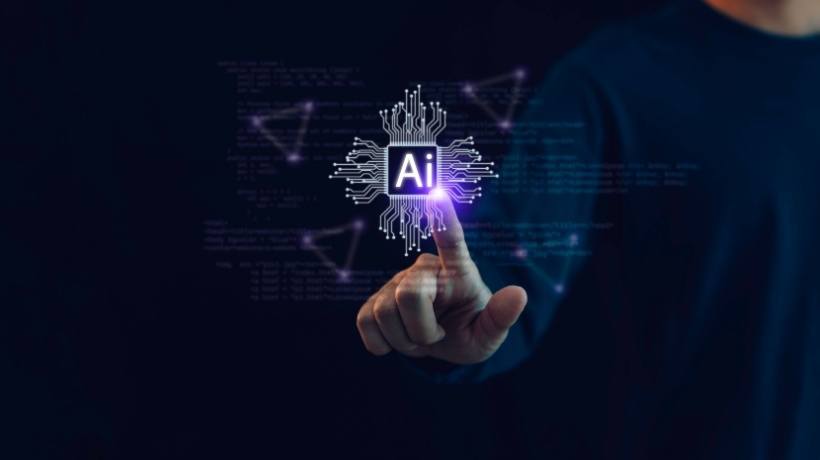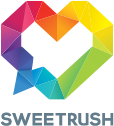GenAI In L&D: Roles, Pairings, And Workflows
Now that we've covered the building codes in our previous article, we'd like to show you the door.
That's not as rude as it sounds, we promise!
We'd actually like to show you three doors, each representing a way L&D teams can leverage genAI:
Door 1
Like any team member, genAI works best when it has a clear understanding of its role and purpose.
It's not a substitute for humans, but it can, with careful oversight, help us extend human expertise and intelligence. (Think of it as a bright, eager, but extremely literal robot assistant that needs constant training and supervision.)
Thanks to its coachability and bottomless energy, genAI can be an effective and engaging addition to our learning solutions. To help learners access the information and skills they need, we can train it to serve in one of the following six roles:
Power Pairing: GenAI + Virtual Reality (VR)
From PB&J to Posh and Becks, we love a power couple—and virtual reality (VR) + genAI is one of our L&D favorites.
Here's what each brings to the table:
Together, this dynamic duo helps L&D innovators bring engaging, effective learning and coaching experiences that help distributed learner audiences practice and perfect high-stakes skills.
This power duo doesn't have to work in isolation. We've worked with several client-partners to create immersive genAI soft skills coaching simulations that leverage gamification; complex, nuanced characters and backstory; and sentiment analysis to create engaging, authentic learning and skilling experiences.
GenAI, Flying Solo
The genAI + VR pairing is an L&D power tool: Like a lightsaber, it's fun to use and incredibly effective.
But sometimes, a simpler tool allows us to be more precise. After all, we wouldn't bring our lightsaber to a job that calls for a razor.
That's why we bring Occam's razor, or the principle that the most likely solution to a problem is the simplest, to our earliest needs analysis conversations with client-partners When there's no need for a 3D environment, we can invite learners to develop their skills in adaptive, digital (but not immersive) genAI simulations…without overengineering.
Door 2
There's rarely a moment when L&D teams aren't asked to do more with less, and faster—and genAI can help with that.
A well-trained genAI tool can help us enhance our team's workflow, shaving hours and costs from the design and development process, and adding the value our stakeholders crave. From content analysis to scenario development, genAI can be the Batman to our Alfred.
Enhancing L&D Content Production with GenAI
Consider a routine task: creating content for a course. The flowchart below represents how most team members (among the 75% who identify themselves as current users of AI tools) [1] are currently using LLMs like Gemini or ChatGPT.
In this workflow, each team member enters their own prompts into the LLM, using their own levels of expertise to refine the outputs. They each drop their individual pieces of the project into the shared file or workspace. Then, at the end, the project lead comes in and integrates all of the pieces.
This practice might shave off some time for each team member, but there's plenty of room for improvement. Here are a few issues with this workflow:
- Each team member is reinventing the wheel by creating their own prompts from scratch. Not so efficient…and not much of a value-add.
- Team members will have differing levels of expertise with LLMs. Suppose one team member is a power user who has created a knowledge base for this project that provides the LLM with additional context and helps it to generate targeted, relevant content (with plenty of human oversight!). This team member's output will be of much higher quality than that of another team member who has less practice with LLMs. In turn, the variance in quality and context makes it challenging for the project owner to integrate each team member's contributions into a unified and high-quality whole.
To add the value our stakeholders are craving, we need to get the entire team prompting at the power-user level. Here's what that workflow looks like:
Consider a workflow in which everyone starts with the most high-quality prompts. Their task: Create content for a course on baking cookies for SweetRush Bakery, Inc.
Each team member would begin with the same client- and project-specific knowledge base to incorporate context on the learner persona, SME persona, branding, language, structure, and style. With this preexisting context in place, each individual team member is more prepared to jump into their part of the project and prompt the LLM for the information they need. Thanks to the extra context, every team member's output is closer in quality, structure, level of detail, and tone.
Even with each team member focused on a different content piece—say, chocolate chips and other add-ins, baking time and temperature, and icing and decorating—the project owner will have a much easier time integrating the final content.
Door 3
- 76% of working professionals say they need AI skills to remain competitive in the job market. [1]
- 66% of organizational leaders say they wouldn't hire someone without AI skills. [1]
- 57% of L&D leaders and professionals rate AI as the No. 1 skill in demand at their organization. [2]
Yet only
- 39% of workers who currently use AI have received training from their organization. [1]
- 25% of organizations are planning to offer training to their employees. [1]
Data tells a story–and the story behind Door 3 is all about opportunity.
As L&D innovators and leaders, this is our moment to help our business partners and stakeholders bridge the AI skills gap and secure the future of our organizations with an enterprise-wide genAI training program, aka Door 3.
In an M.C. Escher-like twist, you can get to Door 3 via Door 1, Door 2, or both. There's great value in leveraging learner-facing genAI (Door 1) and incorporating genAI into your team's workflow (Door 2) for your genAI training program.
Every organization's genAI implementation needs, policies, and applications are unique. That's why beginning with an in-depth needs analysis is so important. In leading with the needs, we ensure that each enterprise genAI training solution integrates with the organization's current set of genAI tools and helps its people develop role-relevant skills.
Here's an example of how a genAI enterprise learning journey might unfold:
Foundational GenAI Training For A Professional Services Company
The learning journey launches with a video showcasing fellow employees' diverse perspectives on genAI and building learners' anticipation with a walk-through of the program and tools.
Learners land in branching interactive scenarios that illustrate genAI fundamentals, best practices, and common pitfalls. They experience firsthand the impact of their choices, such as how biased data can lead to a biased design, and develop the foundational knowledge they need to continue their journey.
Next, learners choose one of several real-world work scenarios and dive into an interactive simulation of a poorly crafted genAI prompt. They use their foundational genAI knowledge to correct these prompts and immediately observe the impact the corrected prompt has on work quality. A genAI coach assesses their work and delivers detailed real-time feedback on their prompt engineering skills.
Equipped with foundational knowledge, learners now explore an interactive resource library of enterprise-wide genAI tools. Dynamic pop-ups reveal brief descriptions of genAI tools and workflows, interactive infographics, and job aids.
Now that learners understand the genAI tools available to them at their organization, they're ready to discover how they can use genAI in their own role and workflow. A curated, personalized genAI toolkit helps them visualize these resources and learn how to use them to streamline their work and improve project outcomes.
When GenAI Isn't Appropriate
If you're feeling inspired by genAI's potential to streamline budget and timelines and enhance learner engagement, you may be wondering if there's anything it can't do.
Like any tool, the answer is a resounding yes!
SweetRush Emerging Technologies Director Adriȧn Soto shares that genAI can be inappropriate for:
- Delivery of very straightforward or standardized content, e.g., compliance training.
- Use in remote worksites due to the need for an active internet connection. (If your team—or your learners—works in these locations, don't despair; these connectivity needs will eventually be solved.)
- Occasions when the human voice, experience, consciousness, or emotions are vital to the learning experience.
Get The Ultimate GenAI Playbook
Are you ready to discover more about the ways genAI can deepen skill development, enhance the learning design and development process, and empower our people to meet the future of work? Download The GenAI Playbook: An L&D Innovator's Guide To Leading-Edge Learning Transformation for an insider's look into genAI use cases, custom learning solutions, and a people-first approach to a genAI learning strategy for your entire organization.
References
[1] 2024 Work Trend Index Annual Report


